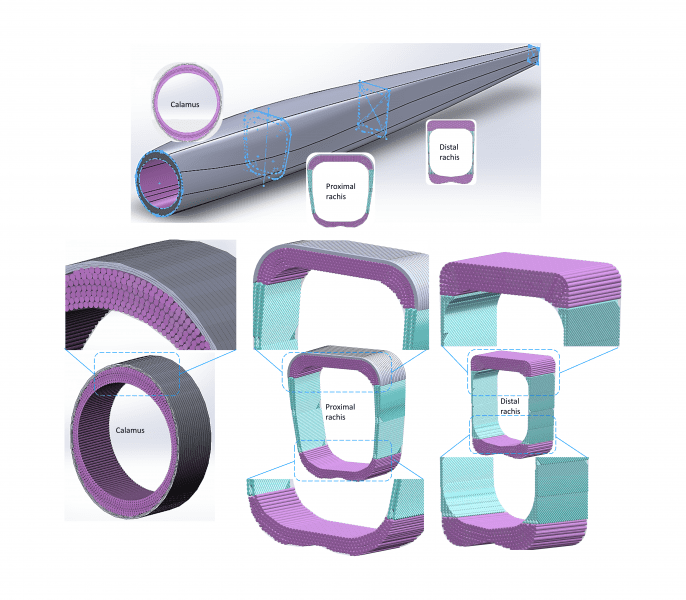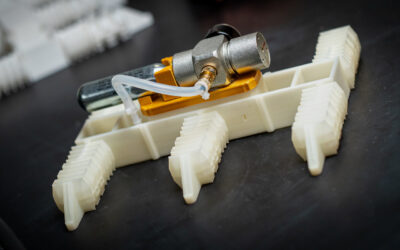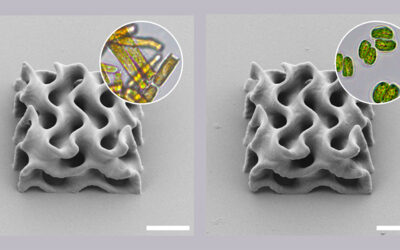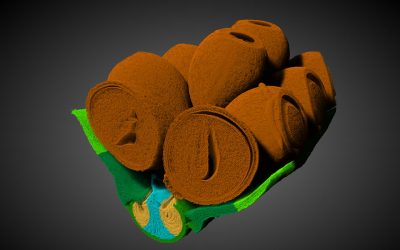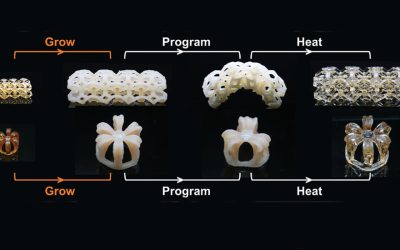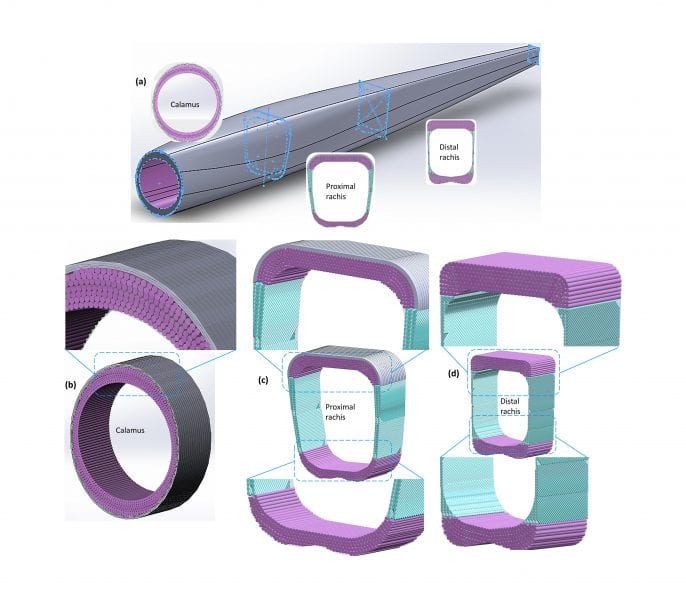
Structural model of the feather shaft cortex: a) the shape factor. The cross section changes from circular to near rectangular. The layered structure of cortex with varying and differentially oriented fibers along shaft length: b) at the calamus, all the cortex is composed of a thin outer layer of circumferential fibers and a thick inner layer of aixal fibers; c) at the proximal rachis, the dorsal cortex consists of a thinner outer layer of circumferential fibers covering axial fibers, the lateral walls of crossed fibers and the ventral cortex of longitudinal fibers; d) at the distal rachis, the dorsal and ventral cortices are composed of axial fibers and the lateral walls of crossed fibers.
Only under special circumstances does nature opt for square shapes; it almost always favors roundness. Notable exceptions are the cells of plants, which derive their name from the square cells of monks. At a larger, structural level, there are a few rare examples: the seahorse tail, a vine found in the Amazon that has a square cross section, and the feather rachis.
A feather is a highly specialized appendage that enables birds to fly, aiding the generation of thrust and lift. Its mechanical properties are optimized and weight minimized. In a recent publication Meyers and Wang (University of California, USA) for the first time reveal the reason for the shape change from round to square in the feather shaft. Using fundamental mechanics equations and experiments in model materials, they show that the square shape provides greater rigidity and higher resistance to ovalization and buckling than a hollow shape of the same weight.
The ovalization can be observed by subjecting a drink straw to progressive bending: the section will gradually change from round to oval, and the stiffness is correspondingly decreased. On the contrary, the feathers of flying birds retain their rigidity intact in spite of bending. The non-flight feathers, e.g. flightless ostrich wing feathers and peacock tail feathers, on the other hand, are not subjected to the same constraints and their shafts do not change from round to square. This proves the correctness of our hypothesis.
In addition, the feather shaft cortex is a fibrous composite with varying fiber orientations along the length adjusting to the local stress requirements: the increasing amount of axial fibers ensure sufficient flexural rigidity, while the crossed fibers provide reasonable flexibility and torsional rigidity.
The features revealed symbolize the unique adaptation of feathers for optimized stiffness and lightness, a natural structure inspiring for advanced engineering designs.

